Evaluating Age-Related Variations of Gaze Behavior for a Novel Digitized-Digit Symbol Substitution Test
Abstract
:Introduction
Related Work
Methodology
Motivation of the proposed study
Design Philosophy
Version 1
Version 2
Version 3
Eye Tracker Data Analysis


Experimental Paradigm
Experimental Setup
Participants
Data Collection
Experimental Protocol
Results and Discussions
Experiment 1: Validation of dDSST with pDSST
Experiment 2: Test-Retest validation of three versions of dDSST
Conclusions
Ethics and Conflict of Interest
Acknowledgements
References
- Akbar, N., K. Honarmand, N. Kou, and A. Feinstein. 2011. Validity of a computerized version of the Symbol Digit Modalities Test in multiple sclerosis. Journal of neurology 258, 3: 373–379. [Google Scholar] [PubMed]
- Amaresha, A. C., V. Danivas, V. Shivakumar, S. M. Agarwal, S. V. Kalmady, J. C. Narayanaswamy, and G. Venkatasubramanian. 2014. Clinical correlates of parametric digit-symbol substitution test in schizophrenia. Asian journal of psychiatry 10: 45–50. [Google Scholar]
- Bachman, P., A. Reichenberg, P. Rice, M. Woolsey, O. Chaves, D. Martinez, and D. C. Glahn. 2010. Deconstructing processing speed deficits in schizophrenia: application of a parametric digit symbol coding test. Schizophrenia research 118, 1–3: 6–11. [Google Scholar]
- Benesty, J., J. Chen, Y. Huang, and I. Cohen. 2009. Pearson correlation coefficient. In Noise reduction in speech processing. Berlin, Heidelberg: Springer, pp. 1–4. [Google Scholar]
- Christodoulou, C., L. B. Krupp, Z. Liang, W. Huang, P. Melville, C. Roque, and L. A. Tudorica. 2003. Cognitive performance and MR markers of cerebral injury in cognitively impaired MS patients. Neurology 60, 11: 1793–1798. [Google Scholar] [CrossRef]
- Elahipanah, A., B. K. Christensen, and E. M. Reingold. 2011. What can eye movements tell us about Symbol Digit substitution by patients with schizophrenia? Schizophrenia research 127, 1–3: 137–143. [Google Scholar] [PubMed]
- Ester, M., H. P. Kriegel, J. Sander, and X. Xu. 1996. A density-based algorithm for discovering clusters in large spatial databases with noise. In Kdd. August. Vol. 96, No. 34, pp. 226–231. [Google Scholar]
- EyeTribe. 2018. The eye tribe. Available online: http://theeyetribe.com/theeyetribe.com/about/index.html (accessed on 24 April 2018).
- Forn, C., V. Belloch, J. C. Bustamante, G. Garbin, M. À. Parcet-Ibars, A. Sanjuan, and C. Ávila. 2009. A symbol digit modalities test version suitable for functional MRI studies. Neuroscience letters 456, 1: 11–14. [Google Scholar]
- Gavas, R., D. Chatterjee, and A. Sinha. 2017. Estimation of cognitive load based on the pupil size dilation. In 2017 IEEE International Conference on Systems, Man, and Cybernetics (SMC). IEEE, October, pp. 1499–1504. [Google Scholar]
- Gavas, R. D., S. R. Tripathy, D. Chatterjee, and A. Sinha. 2018. Cognitive load and metacognitive confidence extraction from pupillary response. Cognitive Systems Research 52: 325–334. [Google Scholar]
- Hart, A. 2001. Mann-Whitney test is not just a test of medians: differences in spread can be important. Bmj 323, 7309: 391–393. [Google Scholar] [PubMed]
- Joy, S., E. Kaplan, and D. Fein. 2004. Speed and memory in the WAIS-III Digit Symbol—Coding subtest across the adult lifespan. Archives of Clinical Neuropsychology 19, 6: 759–767. [Google Scholar]
- Lazeron, R. H., J. B. Boringa, M. Schouten, B. M. Uitdehaag, E. Bergers, J. Lindeboom, and C. H. Polman. 2005. Brain atrophy and lesion load as explaining parameters for cognitive impairment in multiple sclerosis. Multiple Sclerosis Journal 11, 5: 524–531. [Google Scholar]
- Lempert, K. M., Y. L. Chen, and S. M. Fleming. 2015. Relating pupil dilation and metacognitive confidence during auditory decision-making. PLoS One 10, 5: e0126588. [Google Scholar]
- Lezak, M. D. 1994. Domains of behavior from a neuropsychological perspective: the whole story. In Nebr Symp Motiv. January. Vol. 41, pp. 23–55. [Google Scholar]
- Lumsden, J., E. A. Edwards, N. S. Lawrence, D. Coyle, and M. R. Munafò. 2016. Gamification of cognitive assessment and cognitive training: a systematic review of applications and efficacy. JMIR serious games 4, 2: e11. [Google Scholar] [CrossRef] [PubMed]
- Mattila, M. J., K. Aranko, M. E. Mattila, and I. Paakkari. 1994. Effects of psychotropic drugs on digit substitution: comparison of the computerized symbol-digit substitution and traditional digit-symbol substitution tests. Journal of Psychopharmacology 8, 2: 81–87. [Google Scholar] [PubMed]
- McLeod, D. R., R. R. Griffiths, G. E. Bigelow, and J. Yingling. 1982. An automated version of the digit symbol substitution test (DSST). Behavior Research Methods & Instrumentation 14, 5: 463–466. [Google Scholar]
- Mcpherson, J., and N. R. Burns. 2005. A speeded coding task using a computer-based mouse response. Behavior research methods 37, 3: 538–544. [Google Scholar]
- McPherson, J., and N. R. Burns. 2008. Assessing the validity of computer-game-like tests of processing speed and working memory. Behavior Research Methods 40, 4: 969–981. [Google Scholar]
- Murphy, P. R., J. Vandekerckhove, and S. Nieuwenhuis. 2014. Pupil-linked arousal determines variability in perceptual decision making. PLoS computational biology 10, 9: e1003854. [Google Scholar]
- Noiret, N., N. Carvalho, É. Laurent, L. Vulliez, D. Bennabi, G. Chopard, and P. Vandel. 2015. Visual scanning behavior during processing of emotional faces in older adults with major depression. Aging & mental health 19, 3: 264–273. [Google Scholar]
- Randolph, J. J., P. A. Arnett, and C. I. Higginson. 2001. Metamemory and tested cognitive functioning in multiple sclerosis. The Clinical Neuropsychologist 15, 3: 357–368. [Google Scholar]
- Rao, S. L., D. K. Subbakrishna, and K. Gopukumar. 2004. NIMHANS neuropsychology battery-2004, manual. National Institute of Mental Health and Neurosciences. [Google Scholar]
- Salthouse, T. A., R. Letz, and J. Hooisma. 1994. Causes and consequences of age-related slowing in speeded substitution performance. Developmental neuropsychology 10, 3: 203–214. [Google Scholar]
- Salthouse, T. A. 1996. The processing-speed theory of adult age differences in cognition. Psychological review 103, 3: 403. [Google Scholar] [PubMed]
- Salvucci, D. D., and J. H. Goldberg. 2000. Identifying fixations and saccades in eye-tracking protocols. In Proceedings of the 2000 symposium on Eye tracking research & applications. ACM, November, pp. 71–78. [Google Scholar]
- Stephens, R., and B. Sreenivasan. 2002. Analysis of substitution test performance using eye movement and video data. Applied neuropsychology 9, 3: 179–182. [Google Scholar] [PubMed]
- Toledo, J., J. Sepulcre, A. Salinas-Alaman, A. Garcia-Layana, M. Murie-Fernandez, B. Bejarano, and P. Villoslada. 2008. Retinal nerve fiber layer atrophy is associated with physical and cognitive disability in multiple sclerosis. Multiple Sclerosis Journal 14, 7: 906–912. [Google Scholar] [CrossRef] [PubMed]
- Tung, L. C., W. H. Yu, G. H. Lin, T. Y. Yu, C. T. Wu, C. Y. Tsai, and C. L. Hsieh. 2016. Development of a Tablet-based symbol digit modalities test for reliably assessing information processing speed in patients with stroke. Disability and rehabilitation 38, 19: 1952–1960. [Google Scholar] [CrossRef]
- Van der Stigchel, S., and A. Hollingworth. 2018. Visuospatial working memory as a fundamental component of the eye movement system. Current directions in psychological science 27, 2: 136–143. [Google Scholar]
- Warlop, N. P., E. Achten, E. Fieremans, J. Debruyne, and G. Vingerhoets. 2009. Transverse diffusivity of cerebral parenchyma predicts visual tracking performance in relapsing–remitting multiple sclerosis. Brain and Cognition 71, 3: 410–415. [Google Scholar] [CrossRef]
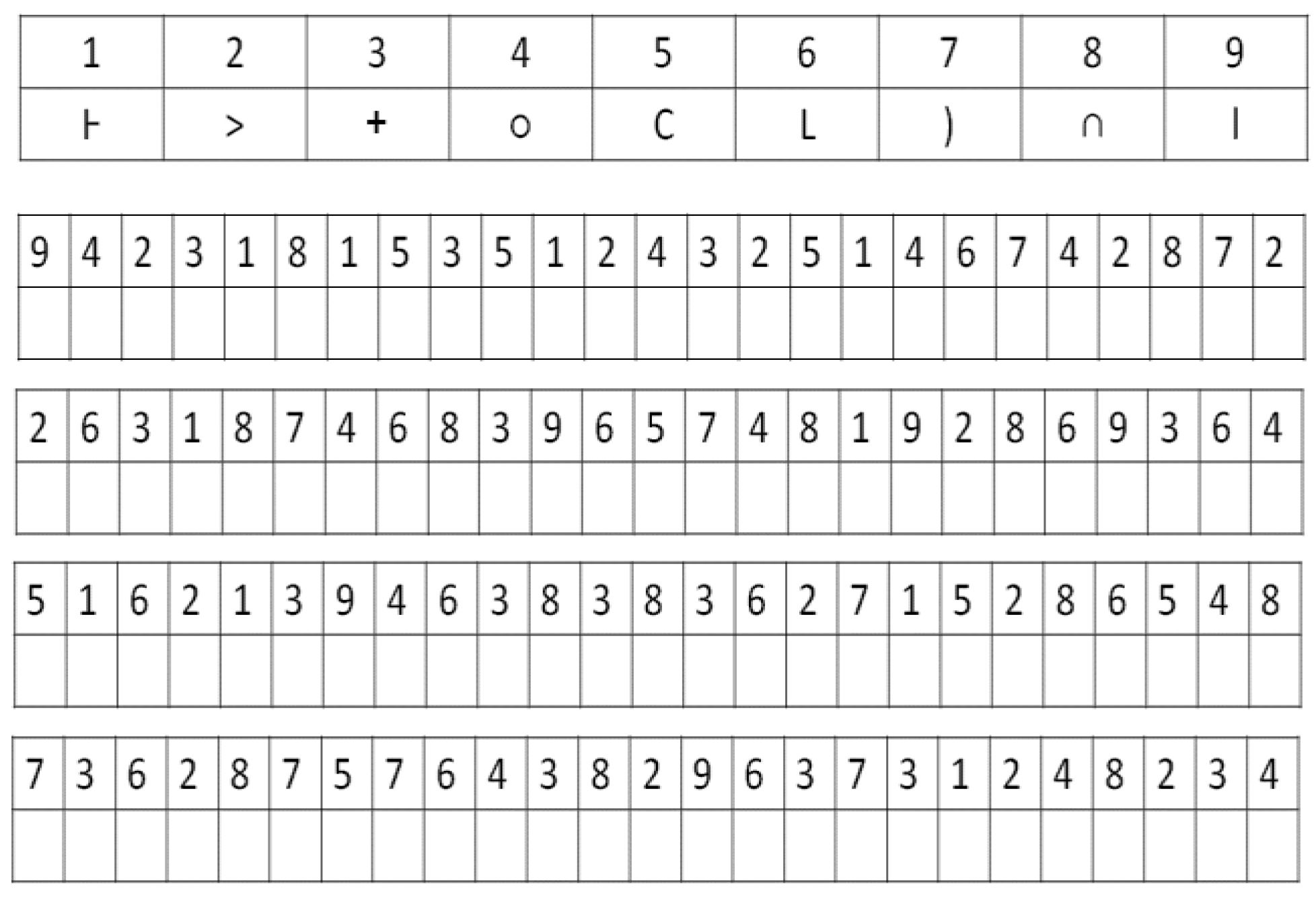
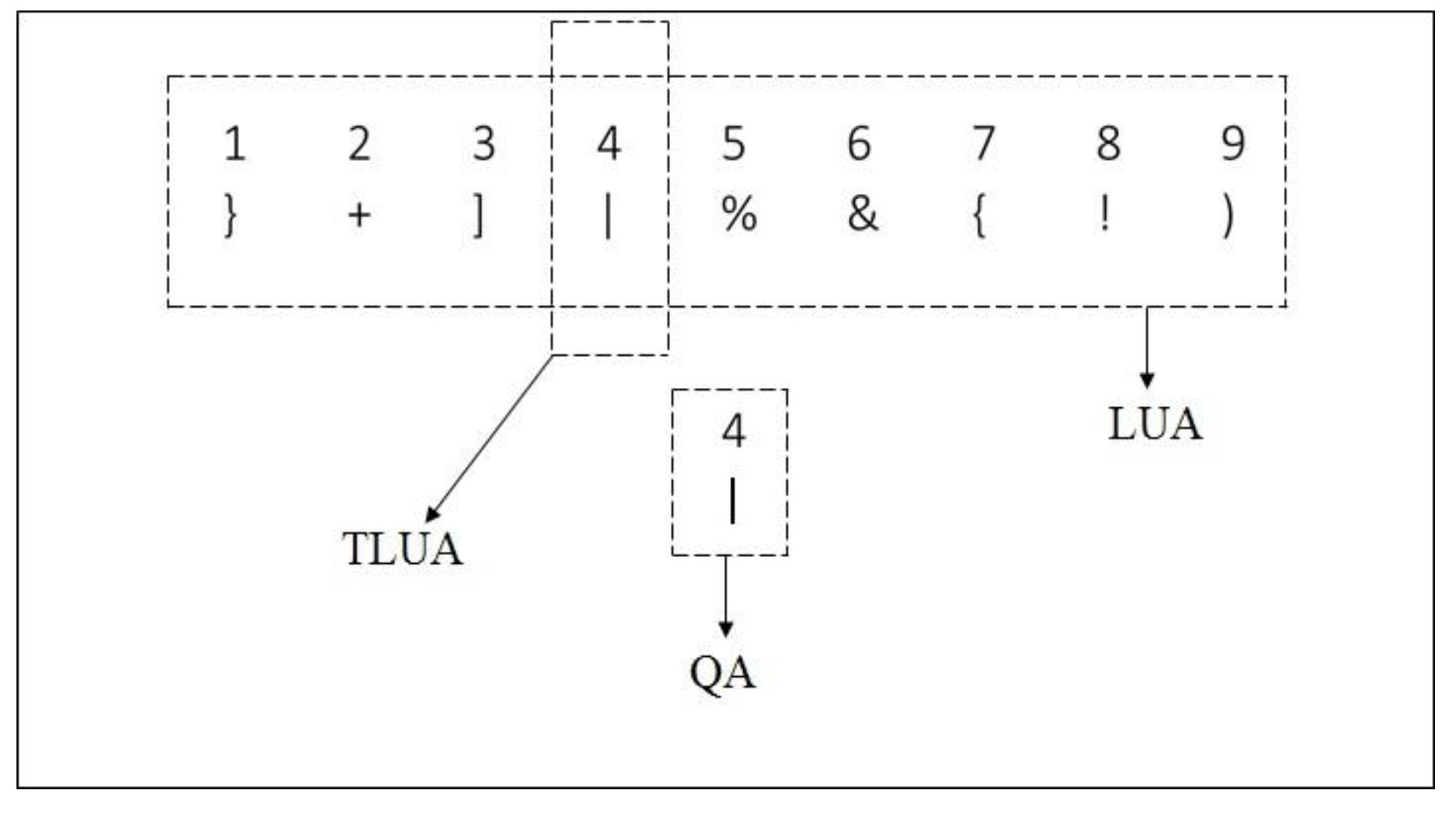
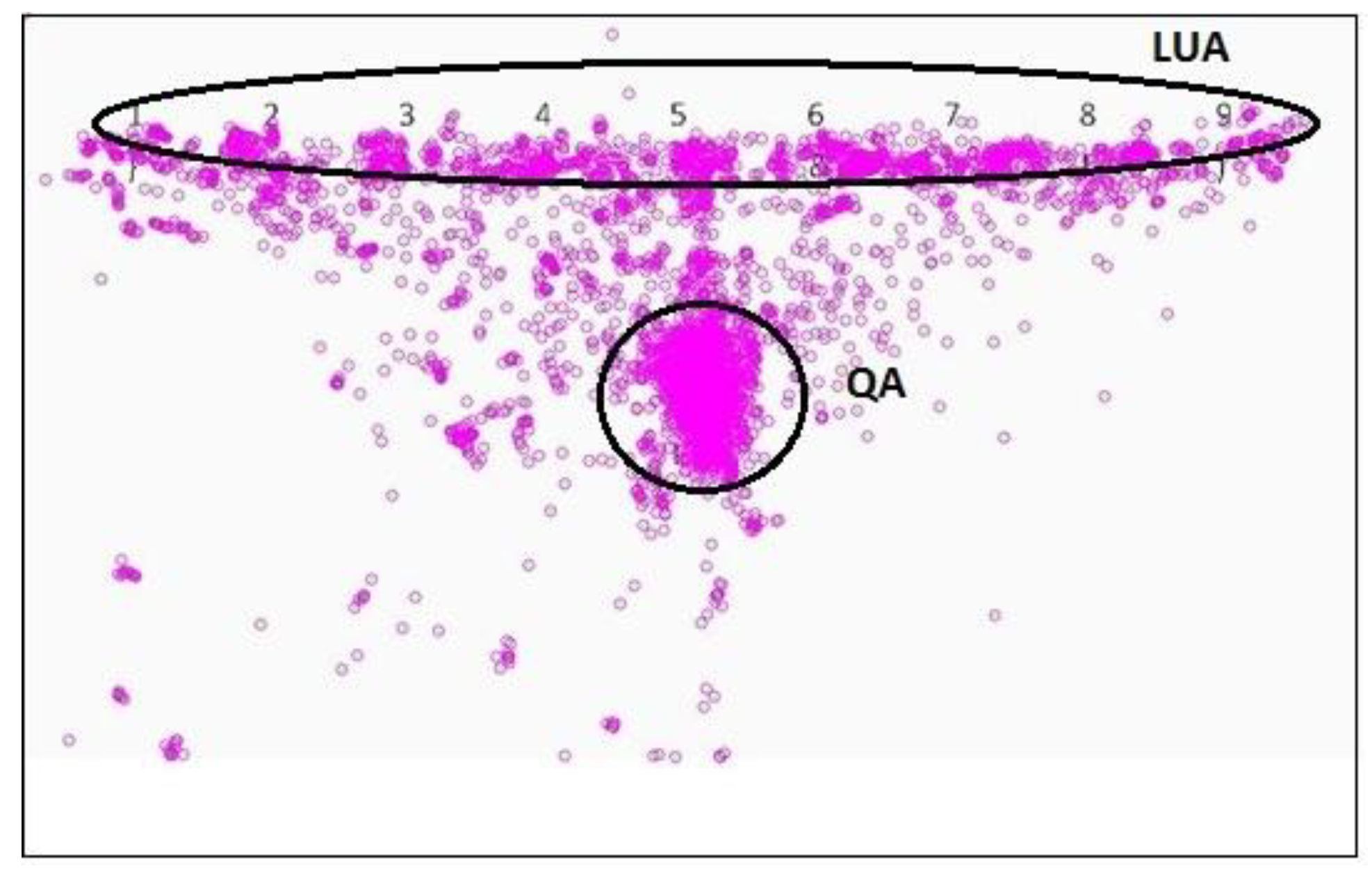


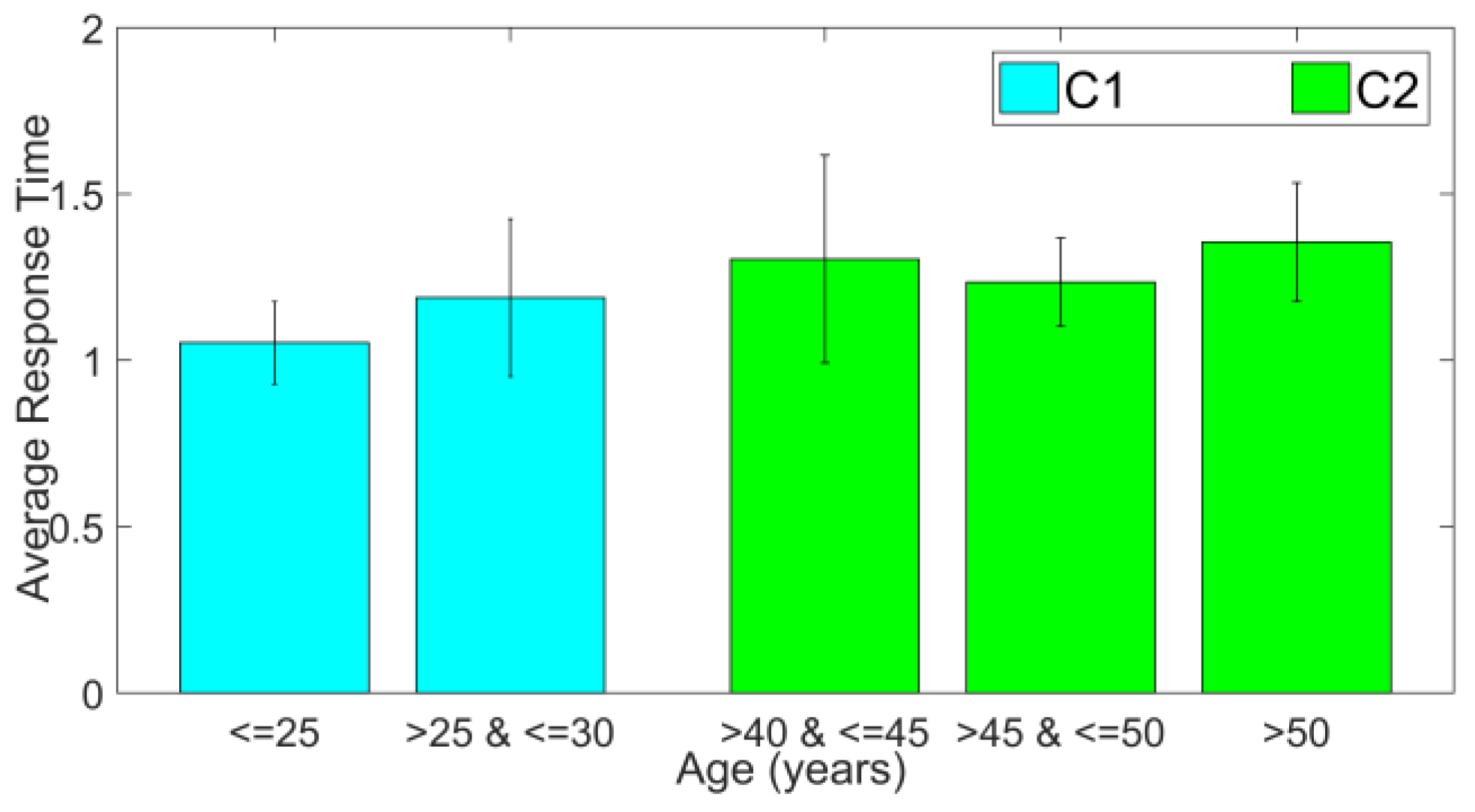
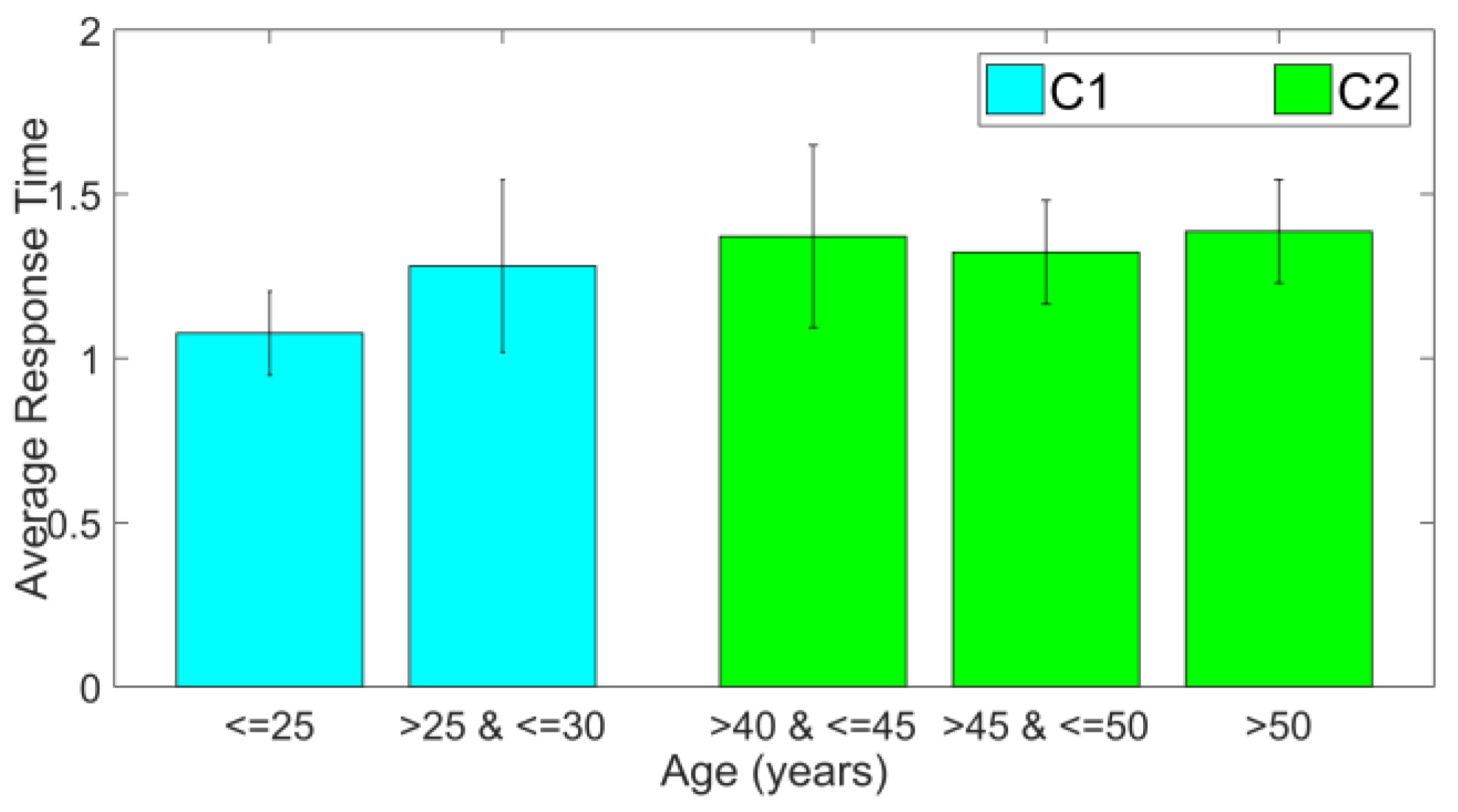
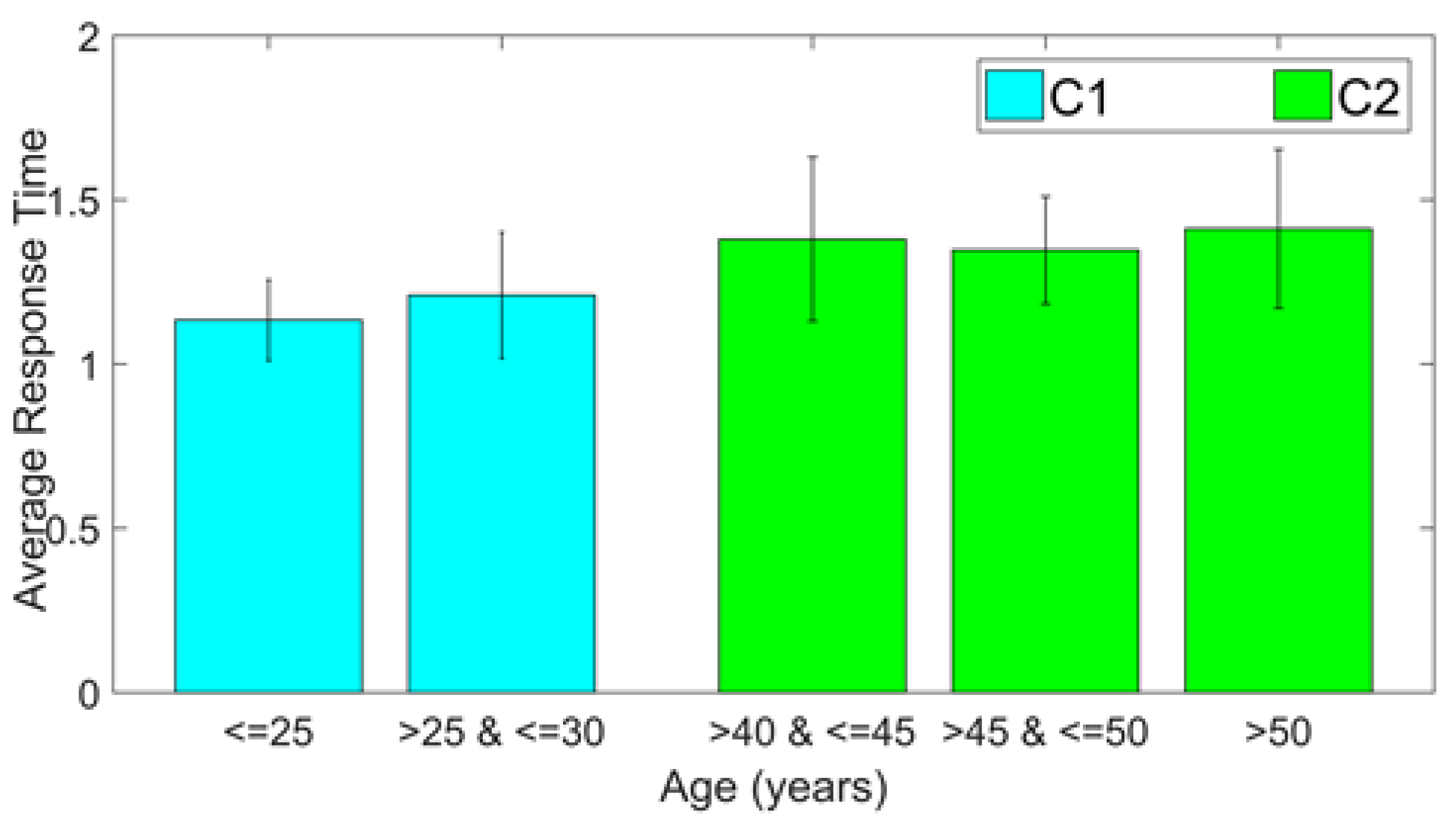
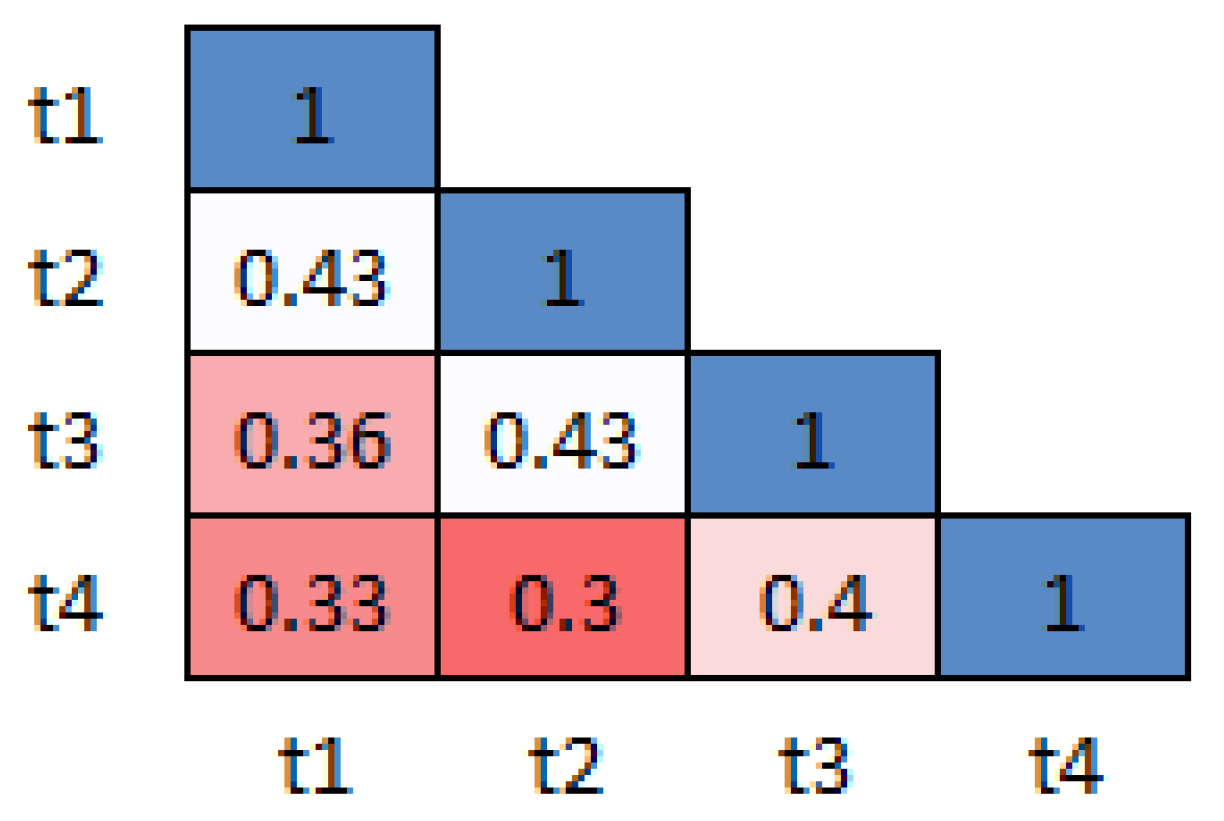

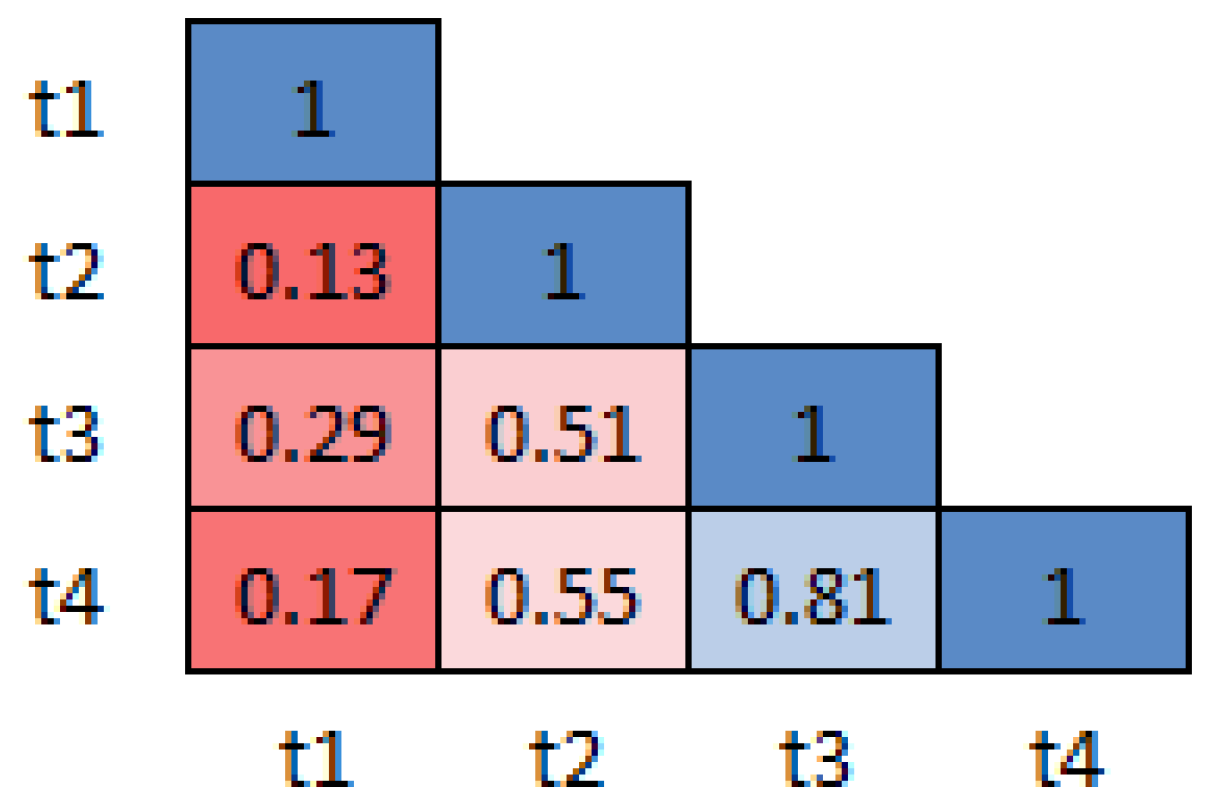
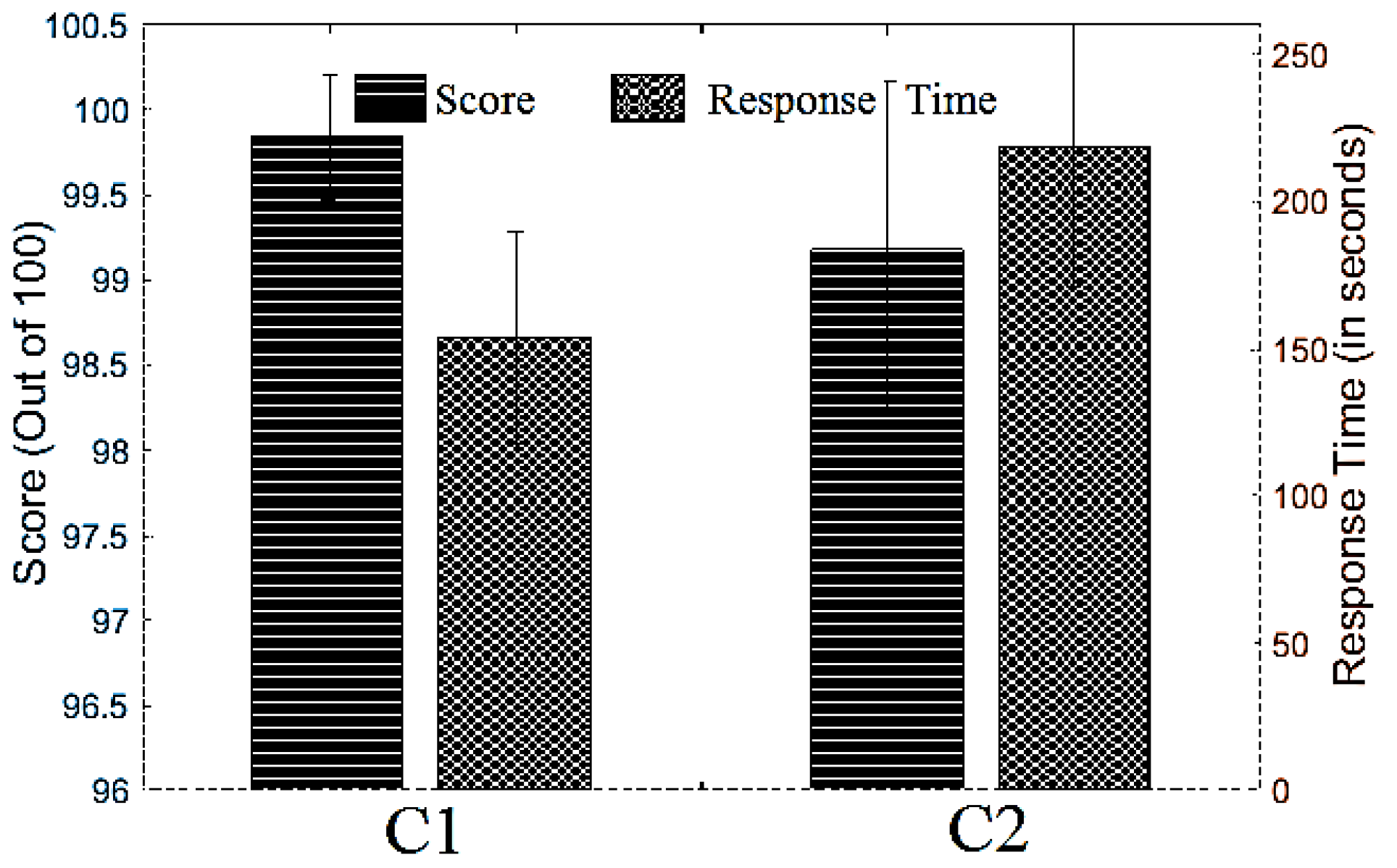
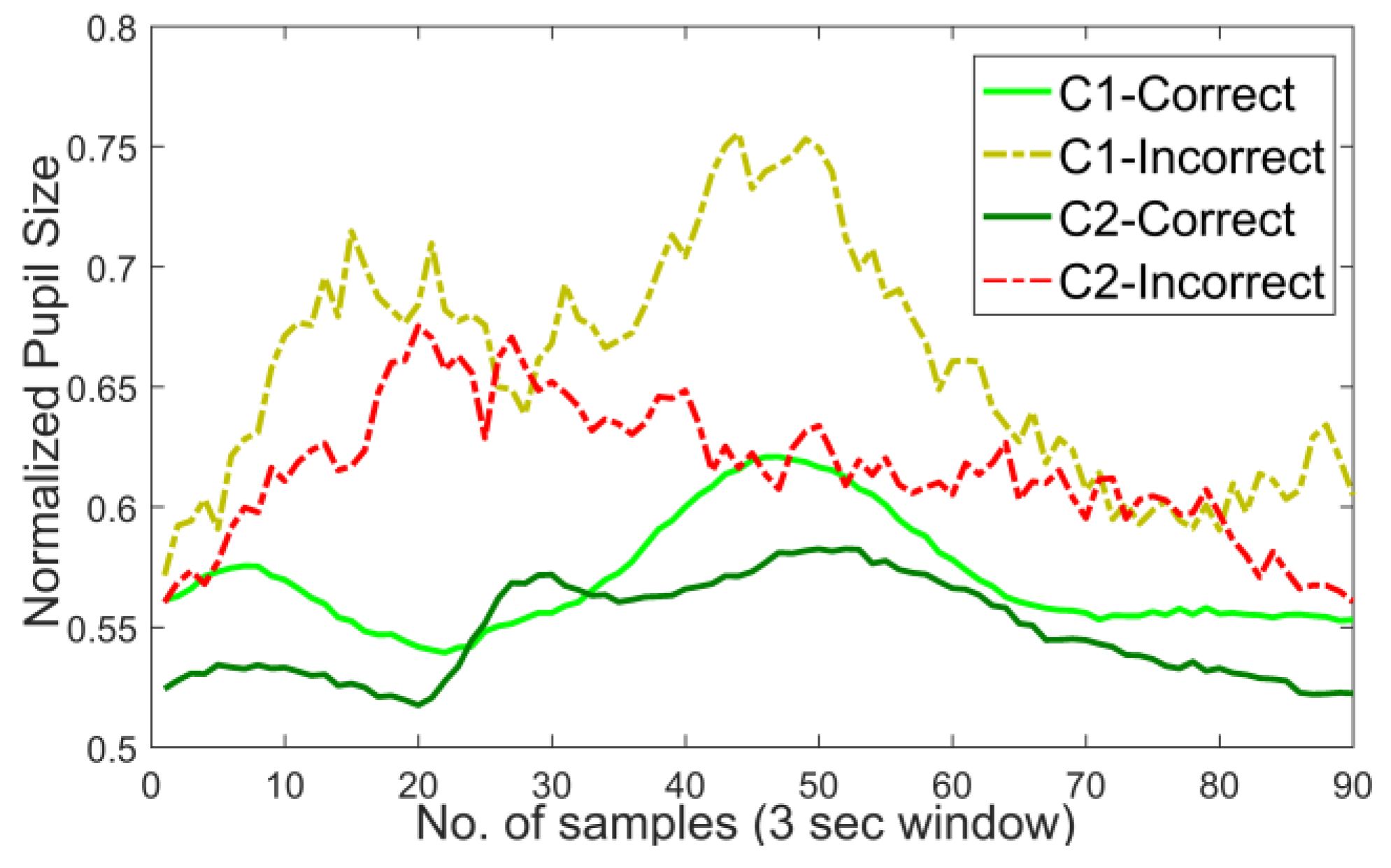
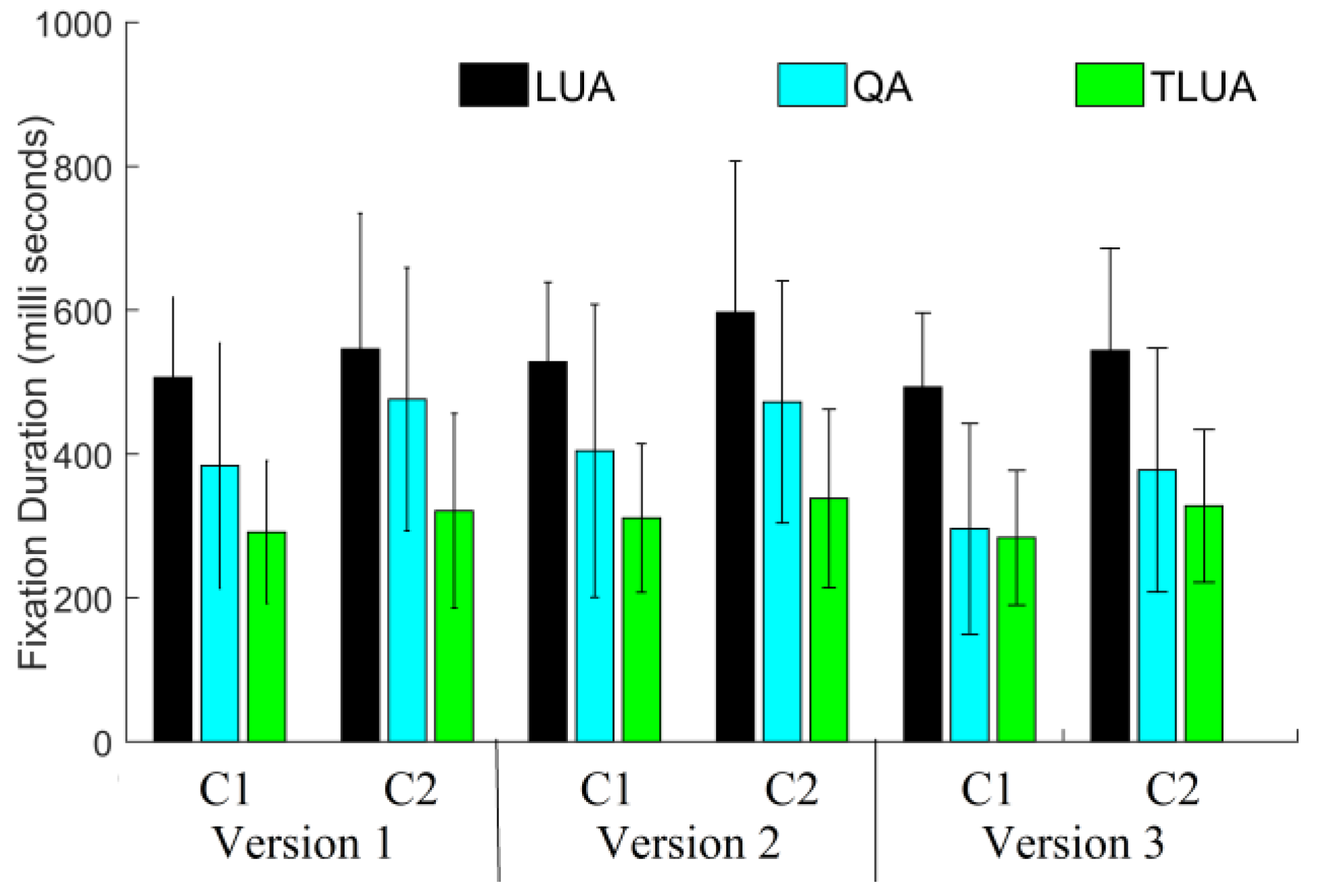

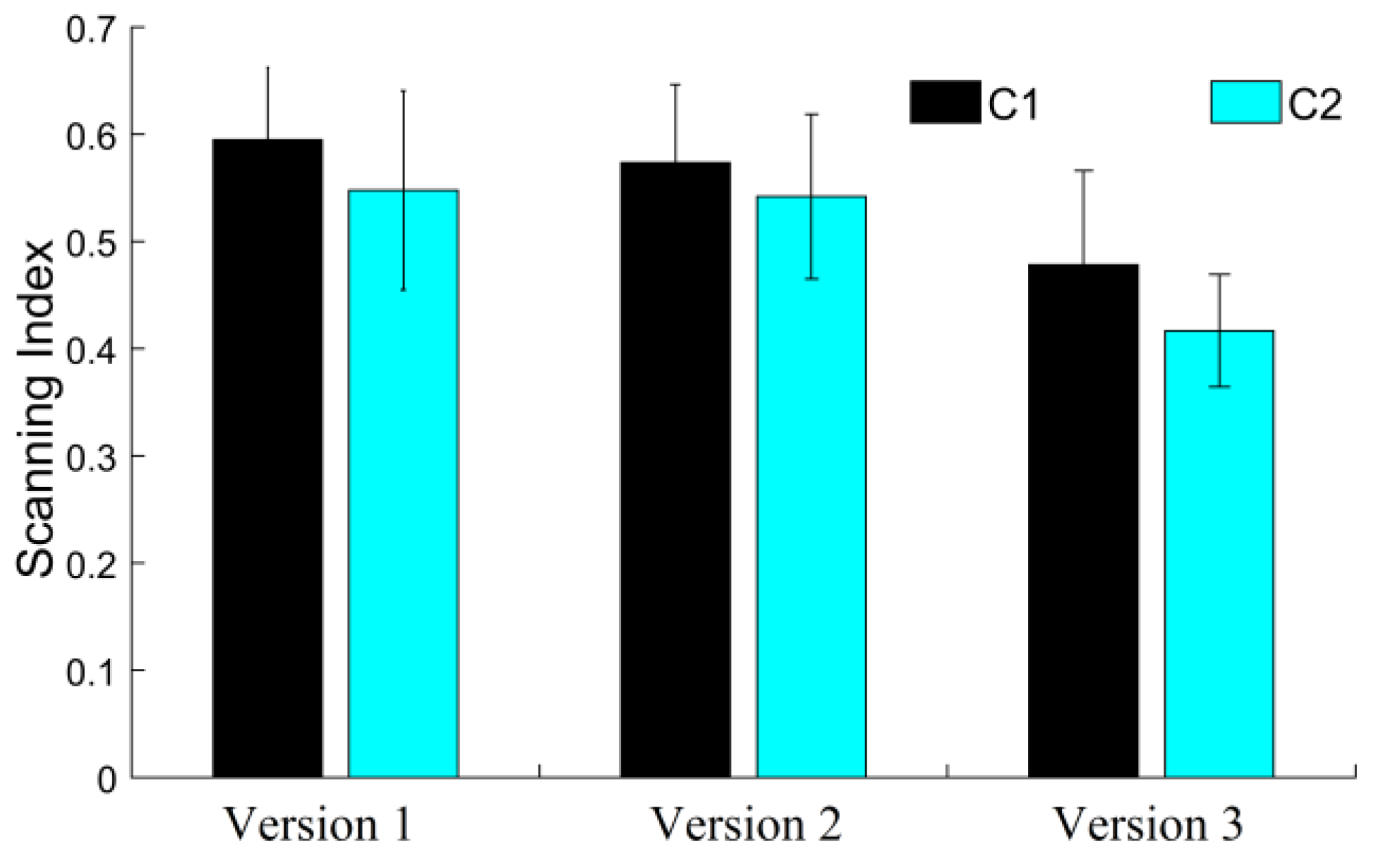

| Class | A | B | C | D |
|---|---|---|---|---|
| Match | 0 | 0 | 1 | 1 |
| Response | 0 | 1 | 0 | 1 |
| Test type | Explanation of test | Significance |
|---|---|---|
| pDSST |
| A standard test (Rao, Subbakrishna & Gopukumar, 2004) used for monitoring working memory, visual-motor coordination and attention. |
| dDSST v1 |
| User matches pairs shown in QA with that presented in the LUA. After few trials, the gaze transitions are expected to be less due to the memorizing effect. Lesser the number of transitions, better is the memory. |
| dDSST v2 |
| As the entries in the LUA changes every time, the user needs to check the LUA in every trial. Slower the transitions, lower is the processing speed. |
| dDSST v3 |
| The user needs to look at different locations of the screen owing to the QA area. This version is indicative of the visuospatial functioning. This might also help in detecting left and right visual neglect. |
| User-specific inferences based on gaze behavior | Gaze behavior based on the analysis of Eye Tracker data |
|---|---|
| User is not attentive | Fixations in non-target LUA or no fixations in TLUA immediately after looking at QA |
| User not sure about the task to be performed | No fixation on TLUA |
| User has poor memorizing effect | Multiple transitions between QA and LUA |
| Visual neglect | For instance, consistent wrong answers for query pairs appearing in left or right visual field in version 3 |
| Less processing speed | Transition speed for QA to LUA is low |
| Group | Age (in years) |
|---|---|
| C1, Sub-Group 1 | <=25 |
| C1, Sub-Group 2 | >25 and <=30 |
| C2, Sub-Group 1 | >=40 and <=45 |
| C2, Sub-Group 2 | >45 and <=50 |
| C2, Sub-Group 3 | >=50 |
| Test | Total Time (seconds) | Score (for 100 trials) |
|---|---|---|
| pDSST (M) | 162.714 (±26.004) | 99.99 (±0.002) |
| pDSST (A) | 148.5 (±17.553) | 99.929 (±0.267) |
| p-value (effect size) | 0.09 (±0.31) | 1 (0) |
| Test | Mean Response Time for each trial (Seconds) | Score (for 50 trials) |
|---|---|---|
| dDSST (M) | 1.987 (±0.083) | 49.642 (±0.633) |
| dDSST (A) | 1.969 (±0.064) | 49.571 (±0.513) |
| p-value (effect size) | 0.53 (0.11) | 0.56 (0.1) |
| pDSST (M) & pDSST (A) | dDSST (M) & dDSST (A) | pDSST (M) & dDSST (M) | pDSST (A) & dDSST (A) | |
|---|---|---|---|---|
| Correlation coefficient | 0.91 | 0.76 | 0.51 | 0.48 |
| (<0.001) | (0.001) | (0.062) | (0.08) |
| Version 1 | Version 2 | Version 3 | ||||
|---|---|---|---|---|---|---|
| C1 | C2 | C1 | C2 | C1 | C2 | |
| Score (out of 50) | 49.15 (0.8) | 48.9 (1.92) | 49.69 (0.63) | 49.72 (0.46) | 49.38 (0.65) | 49.09 (1.9) |
| Response Time (sec) | 1.104 (0.18) | 1.29 (0.2) | 1.154 (0.2) | 1.35 (0.19) | 1.16 (0.15) | 1.37 (0.19) |
| KeyHold Time (sec) | 0.137 (0.036) | 0.137 (0.039) | 0.126 (0.03) | 0.133 (0.036) | 0.123 (0.031) | 0.138 (0.033) |
| H computed on | C1 | C2 | p-value (effect size) |
|---|---|---|---|
| Pupil Size | 0.9998 (0.0001) | 0.9981 (0.0058) | >0.05 (-0.0828) |
| Score | 0.9996 (0.0004) | 0.9992 (0.0018) | >0.05 (-0.1461) |
| LUA nFixs | 0.9844 (0.01) | 0.9879 (0.0056) | >0.05 (-0.1183) |
| QA nFixs | 0.9715 (0.043) | 0.9887 (0.012) | <0.05 (-0.4376) |
Copyright © 2019. This article is licensed under a Creative Commons Attribution 4.0 International License.
Share and Cite
Chatterjee, D.; Gavas, R.D.; Chakravarty, K.; Sinha, A.; Lahiri, U. Evaluating Age-Related Variations of Gaze Behavior for a Novel Digitized-Digit Symbol Substitution Test. J. Eye Mov. Res. 2019, 12, 1-15. https://doi.org/10.16910/jemr.12.1.5
Chatterjee D, Gavas RD, Chakravarty K, Sinha A, Lahiri U. Evaluating Age-Related Variations of Gaze Behavior for a Novel Digitized-Digit Symbol Substitution Test. Journal of Eye Movement Research. 2019; 12(1):1-15. https://doi.org/10.16910/jemr.12.1.5
Chicago/Turabian StyleChatterjee, Debatri, Rahul Dasharath Gavas, Kingshuk Chakravarty, Aniruddha Sinha, and Uttama Lahiri. 2019. "Evaluating Age-Related Variations of Gaze Behavior for a Novel Digitized-Digit Symbol Substitution Test" Journal of Eye Movement Research 12, no. 1: 1-15. https://doi.org/10.16910/jemr.12.1.5
APA StyleChatterjee, D., Gavas, R. D., Chakravarty, K., Sinha, A., & Lahiri, U. (2019). Evaluating Age-Related Variations of Gaze Behavior for a Novel Digitized-Digit Symbol Substitution Test. Journal of Eye Movement Research, 12(1), 1-15. https://doi.org/10.16910/jemr.12.1.5



